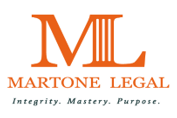NLRB's New Joint Employer Rule
Authored by: Andy Martone, Esq.

On Friday, October 27 the National Labor Relations Board issued its long-awaited explanation and justification for its new final Rule with regards to determining whether one entity is the “joint employer” of the employees of a second entity.
Many were expecting the NLRB to simply adopt its proposed rule. Instead, the Board modified the proposed rule to: (1) clarify the definition of “essential terms and conditions of employment,” (2) identify the types of control that are necessary to establish joint-employer status and the types of control that are irrelevant to the joint-employer inquiry; and (3) establish the bargaining obligations of entities found to be joint employers.
In 229 pages of administrative rationalization (and a detailed dissent), the NLRB not only adopted its new rule, but it also added guidance that makes the new rule even more one-sided.
Under the old rule established in 2020, an entity could only be considered a joint employer if it actually exercised “substantial direct and immediate control” over the essential terms and conditions of another company’s employees. An unexercised or potential right to control was not sufficient to establish joint employer status.
The new rule and the related guidance include several major changes to the way that the NLRB will address joint employer issues.
- An unexercised right to control the essential terms and conditions of employment will be sufficient to establish joint employer status.
The new rule rescinded the old rule and provides that an entity may be a joint employer if it “possesses the authority to control (whether directly, indirectly, or both), or to exercise the power to control … one or more of the employee’s essential terms and conditions of employment” and that an entity that has such direct or indirect control can be considered a joint employer, “regardless of whether the [entity] exercises such control.”
The new rule defines the “essential terms and conditions of employment” as being:
-
Wages, benefits, and other compensation.
-
Hours of work and scheduling.
-
The assignment of duties to be performed.
-
The supervision of the performance of duties.
-
Work rules and directions governing the manner, means, and methods of the performance of duties and the grounds for discipline.
-
The tenure of employment, including hiring and discharge; and
-
Working conditions related to the safety and health of employees.
Under the new rule, evidence of an employer’s control and/or potential control over matters that are not included in this list of seven (7) essential terms and conditions of employment is not relevant to the joint-employer inquiry.
-
Direct or indirect control through an intermediary will also be sufficient to establish joint employer status.
The NLRB will also determine joint employer status based on indirect control/right to control through an "intermediary," potentially opening employers up to unanticipated downstream joint employer liability through entities with which they do not have a direct relationship such as second tier subcontractors.
-
Even the presence of a single factor can be enough to establish joint employer status.
The NLRB will not use a balancing test or require that the alleged joint employer exercise control or have the potential to exercise control over more than one of the seven listed essential terms. The presence of one factor – particularly the first factor (control over wages, benefits, and other compensation) may be sufficient to establish joint employer status.
-
Joint employers have a broad duty to bargain.
The new rule requires a joint employer to bargain collectively with the representative of the joint employees over any term or condition of employment that it either has the authority to control or exercises the power to control, regardless of whether that term or condition is one of the 7 listed essential term or condition of employment under the new rule. However, a joint employer is not required to bargain over any term or condition of employment that it does not possess the authority to control or exercise the power to control.
-
Employers should give their contract boilerplate careful review immediately.
Employers need to review their contract boilerplate very carefully. The NLRB has indicated that contractual boilerplate and fine print that gives a company the authority to control the details of the manner and means by which work is performed and the terms and conditions of employment of the workers performing the work is evidence of joint employer status, even if the company has never exercised such authority.
Companies that maintain control language in their subcontracts are at substantial risk of being found to be joint employers.
-
Certain actions have been excluded from the category of things that provide evidence of joint control.
Despite the expansive nature of the changes between the old rule and the new rule, the NLRB did set forth some actions that will not provide evidence of joint employer status.
-
Requiring compliance with the law in a contract does not equate to exercising control or reserving control.
-
Incorporating regulatory requirements into a contract is not the same as exercising control or reserving control.
-
Contracts that set expectations or requirements with regard to the result of the work do not exercise control in the joint employer context unless they reserve the authority or exercise the power to control the details of the manner or methods by which the work is performed.
-
The NLRB also recognized the particular nature of the construction industry and will not treat a general contractor as the joint employer of a subcontractor’s employees solely because the general contractor has overall responsibility for overseeing operations on the jobsite unless the general contractor possesses or exercises control over particular employees’ essential terms and conditions of employment.
-
Most of the new rule is already in effect.
The new rule is scheduled to take effect on December 26, 2023, and will be applied to all cases filed after that date. However, the NLRB has taken the position that the old rule exceeded the Board's authority (and was therefore presumptively invalid). This sets the stage for the retroactive application of the new rule. In addition, the NLRB's rescission of the old rule and the passage of the new rule are treated as separate, which means that even if the new rule is invalidated by the courts, the old rule will no longer be in effect and the NLRB will revert to the test that pre-existed the old rule – which is pretty much the same as the test under the new rule.
